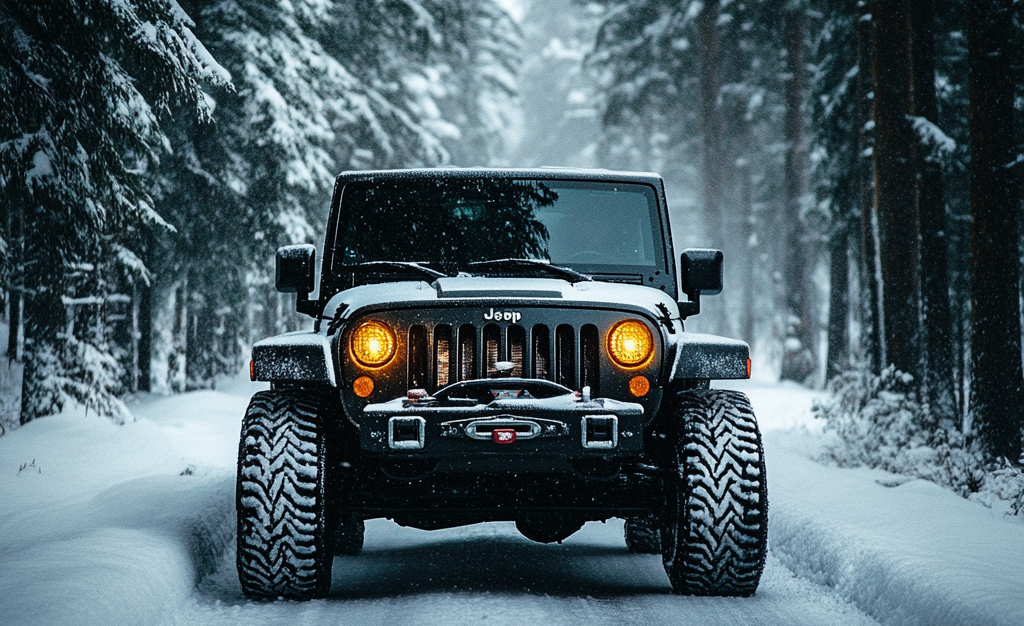Mastering the Trails: Basical Tips and Maneuvers for Off-Roading

Introduction:
Off-roading is not just about the thrill of exploring unbeaten paths; it's about the skill, technique, and understanding of the terrain. Whether you're a seasoned adventurer or just starting your off-road journey, mastering specific skills and maneuvers can enhance your experience and keep you safe. Here's a guide to some of the critical techniques and top of mind tips every off-roader should know.
1. Hill Climbing and Descending
Climbing:
- Throttle Control: Gentle and precise application of power prevents wheel spinning and ensures a smooth climb. Avoiding sudden acceleration maintains grip and stability.
- Line Selection: Choosing the best path up the hill that offers the most grip and avoids large obstacles. Assess the terrain, understand your vehicle's clearance, and take the most practical route.
- Momentum: Consistent speed is key. Over-accelerating can cause loss of control, while slowing down too much might stall progress.
Descending:
- Low Gear: Engaging a lower gear utilizes engine braking, providing control and preventing the vehicle from accelerating downhill.
- Braking: Gradual and even application of brakes allows control without locking the wheels, which can lead to skidding.
- Steering: Keeping wheels aligned with the slope's direction helps to avoid lateral rollovers.
2. Rock Crawling
- Spotting: Utilizing a knowledgeable spotter helps to guide through complex rock obstacles. Communication and trust between the driver and spotter are crucial.
- Tire Placement: Purposefully positioning tires on top of rocks rather than between them can prevent getting wedged.
- Low Speed: Engaging low range, moving slowly, and applying power steadily ensures that the vehicle can navigate obstacles without damaging the undercarriage.
3. Water Fording
- Assessment: Evaluate the depth, current, and potential obstacles underwater. Walk the route if necessary.
- Steady Pace: Keeping a consistent, slow pace creates a bow wave that pushes water in front of the vehicle, preventing engine flooding.
- Exhaust Check: Ensuring the exhaust is clear of water to prevent back pressure that can stall the engine.
4. Mud Navigation
- Momentum: A steady momentum helps in preventing the vehicle from getting bogged down.
- Steering: Using gentle zig-zag patterns can help the tires find traction. This involves moving the steering wheel back and forth as you progress through the mud.
- Recovery Knowledge: Having winches, tow straps, and other recovery tools, and knowing how to use them can make the difference in sticky situations.
5. Sand Driving
- Air Pressure: Lowering tire pressure increases the surface area touching the sand, improving traction.
- Throttle Management: A gentle throttle helps to keep the vehicle moving without digging in the sand.
- Recovery Gear: Shovels, traction mats, and other recovery equipment are essential for sandy terrains.
6. Snow and Ice
- Tire Chains: Tire chains or suitable snow tires can make driving on ice more manageable and safer.
- Smooth Driving: Sudden steering, acceleration, or braking can lead to loss of control on slippery surfaces.
- Know Your Path: Understanding what's under the snow is vital; hidden obstacles can cause significant damage.
The art of off-roading is about understanding the unique challenges of each terrain and how to approach them. Practicing these skills will lead to a more enjoyable and safer off-road experience. Always ensure to match your vehicle's capabilities with the terrain and carry the right equipment. By wearing your Obsidian Design gear, you're not just part of the journey, but part of a community that values the blend of utility and style. Happy trails!









